My name is François, and I’m a 30 year old born in Belgium and currently living in Denmark. When I was around 15, my granddad gave me his Canon AE-1, describing it to me at the time as one of the most sold and easiest to use film cameras. This is how I started shooting, and continued shooting for a couple of years, on and off, mostly leaving the aperture on automatic and not much understanding all the subtleties and possibilities of photography.
Then in 2009-2010, as I was getting more interested and with digital SLRs all the rage, my families gifted me a Canon 500D with a 18-250 Sigma lens, which I used quite intensely, learning more about the exposure triangle, trying long exposures and light painting in the dark; shooting family events and then parties at university, and more or less letting my grandad’s camera collect dust.
In 2015, I then sold my Canon 500D and bought a second-hand Fuji film X100s – never having been a huge fan of (nor really getting skilled at) editing my photos, the Fuji was a perfect companion – good lens, fairly compact, stylish, great jpegs. And I still have it to this day.
The call of film
But then, during the pandemic, I was like many people looking for something to help me pass the time, and decided to get back into film. I recovered my Canon AE-1, bought a daylight development tank, started shooting again and discovered numerous YouTube channels and websites, including this one, which filled me with the irrepressible desire to try more cameras. And so just like that, the diagnosis fell. I had caught it too, after hearing and reading so much about sure. GAS. Gear Acquisition Syndrome.
I started reading and watching all the lists on best rangefinder, best SLR, best medium format, best compact, etc. I spent hours scouring eBay and Denmark’s local version of it for those gems, settling usually for the more affordable alternatives. And I loved it. I find real pleasure in the tactile experience of analog photography, from selecting and loading film, to carrying, shooting, and rewinding the film. And each camera is a different experience, with its own sounds and feeling, shapes and weights.
So in the space of a year, I bought a Ricoh R10; a Minolta weathermatic; a canon EOS 300 followed by a 300V; a Canon Canonet 28; a Nikon AW AF Action Touch; a Flexaret TLR, followed by a Rolleicord IV; an Olympus Trip 35; a Leica Minizoom; an Olympus XA; a Yashica Electro 35 GT; a Minolta SRT100x, followed by a Minolta XD-5; a Zeiss Ikon nettar 516 or 517; a Fuji GS645S; a Diana pinhole.
A number of these were duds and couldn’t be repaired (such as the EOS 300 and the Nikon Action Touch); some gave me some great pictures, but were not keepers for me and were sold (Olympus Trip 35 and Canon Canonet 28; the Flexaret TLR). But even more I kept and use.
The Yashica electro 35 GT
There is one however with which I am still unsure what to do, and it is the one I’d like to talk more about today – maybe that writing this piece will actually help me figure things out. And that is the Yashica electro 35 GT.
The “GT” is an all-black version of this famous fixed-lens (45mm), aperture priority only, rangefinder camera. It is a solid, quite heavy camera, unexpectedly big, with a fast (f/1.7) and quite sharp lens. This was my first foray into rangefinders (albeit not a fully manual one), and while I haven’t convinced myself to sell it, it hasn’t completely won me over either.
First, I repeat, as many of you probably already know, it is a large and quite heavy camera. It is not bulky like a DSLR, but it is certainly not compact. But the weight is, to a certain extent, reassuring. It feels solid.
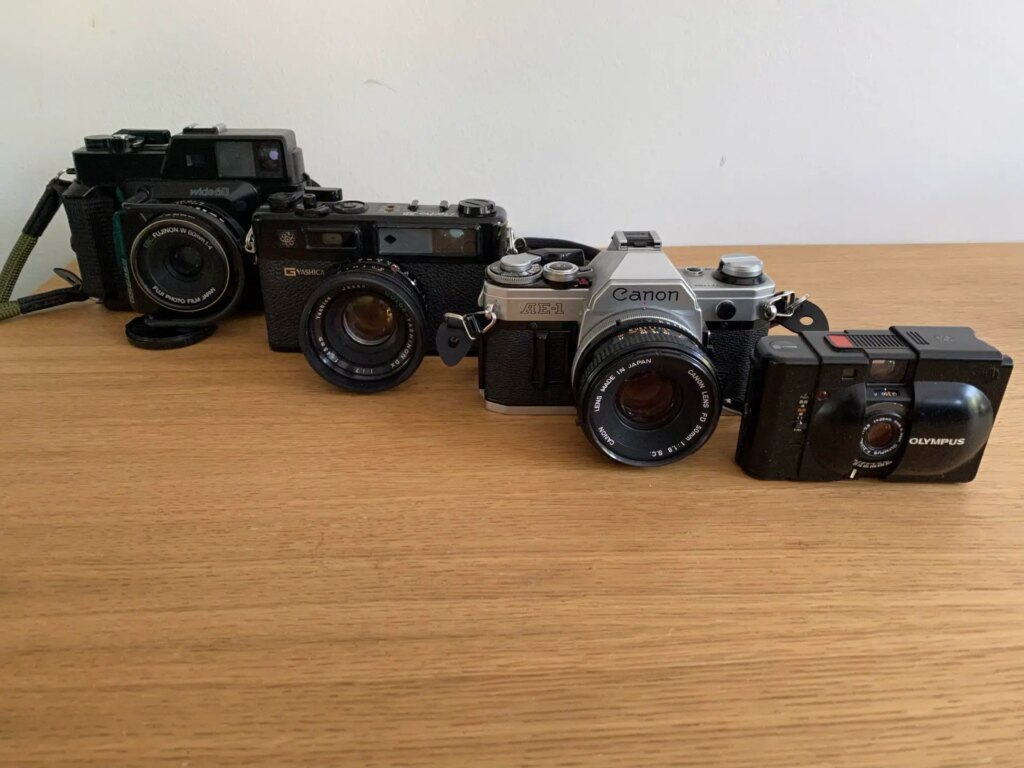
Then, I find the focusing ring a bit awkward to use; slightly stiff (which of course might be an issue with my camera) and too close to the body of the camera. This means that I find the focusing experience difficult, and find focusing with an SLR quite a bit easier. I do not easily see whether the two images are perfectly superposed, which slows me down quite a bit.
Third, while the light meter and automatic shutter speed selection seem to work pretty well, I find myself wanting to know what shutter speed the camera is choosing. And as someone wearing glasses, I find it sometimes difficult to see in the viewfinder whether the camera is telling me to choose a smaller or bigger aperture.
And yet, I come back to this camera. I’ve found some of the pictures I took with it really pleasing, such as this picture below of people fishing in the fjord (this was my first roll, before repairing the light seals).
In this picture of a cat ( + light leak!) we also see how sharp the images can look when the focusing is right – and despite wishing to know what shutter speed the camera chooses, I haven’t yet had pictures that were missed because of a too slow or too fast shutter speed.
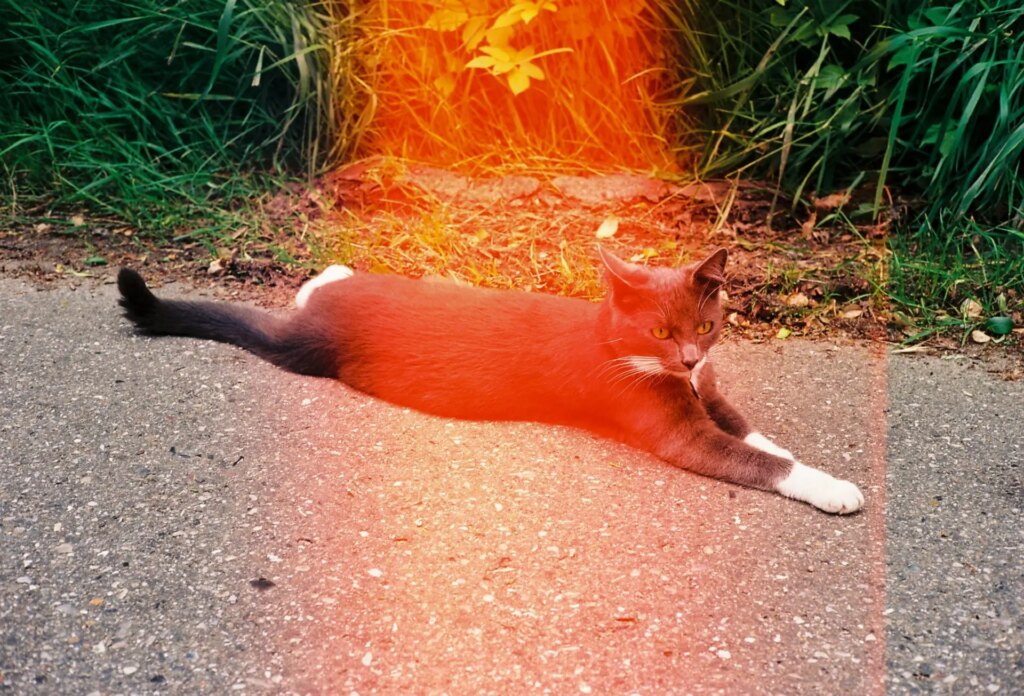
Then, with this indoor portrait of my dog shot on Lomo 100, we see how fast the lens is and how well it fares in low-lit situations.
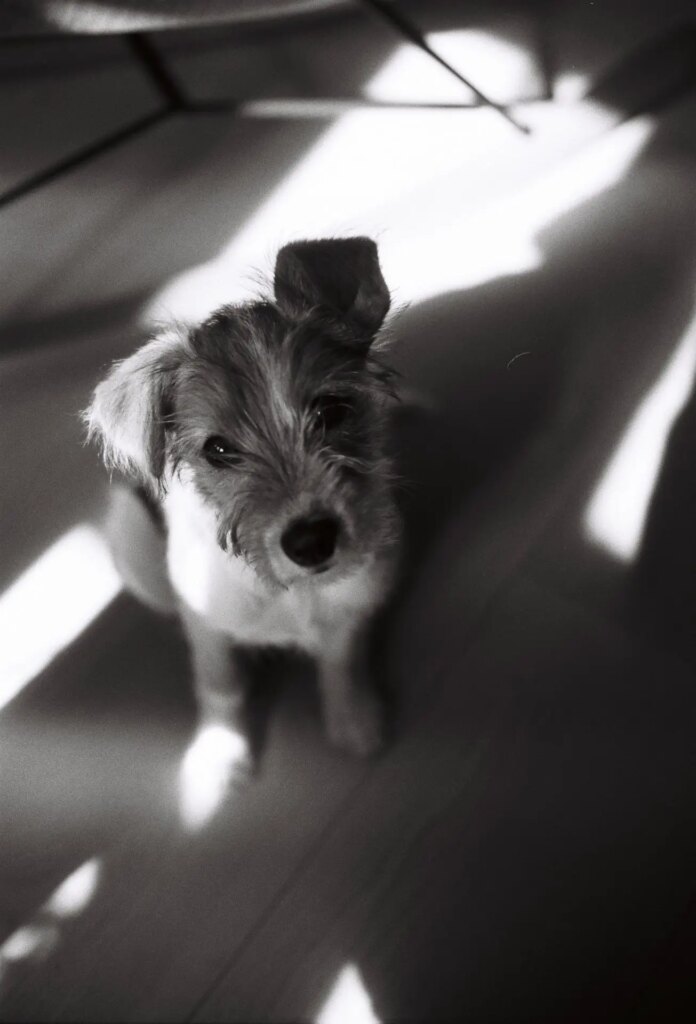
One of my favourite pictures with this camera, despite the light leak:
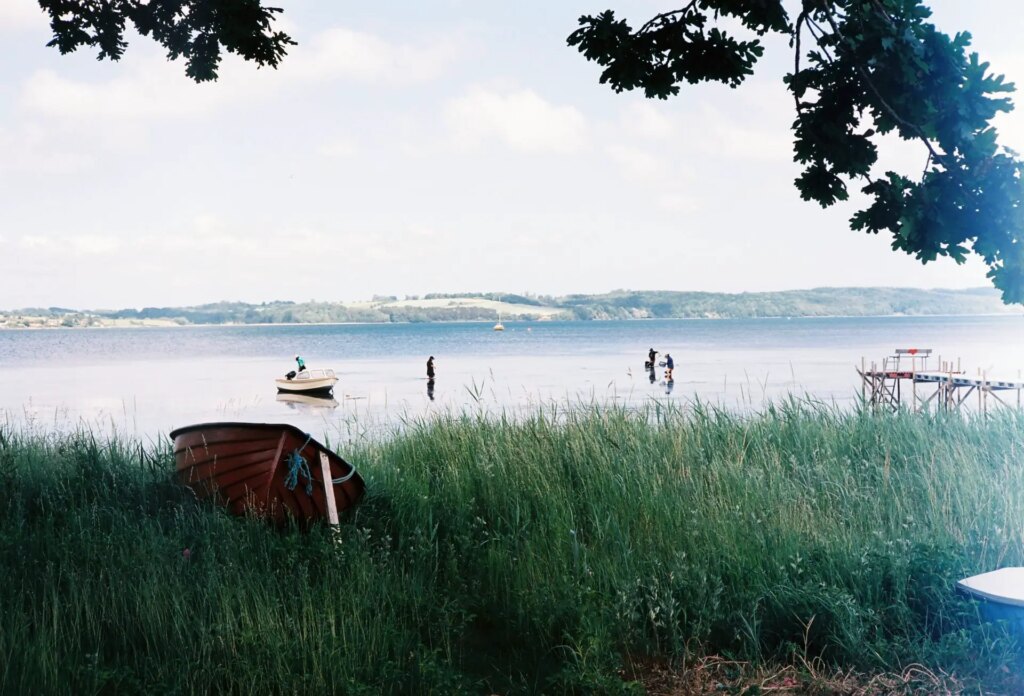
Finally, a few more pictures, including some where we see that I missed the focus:
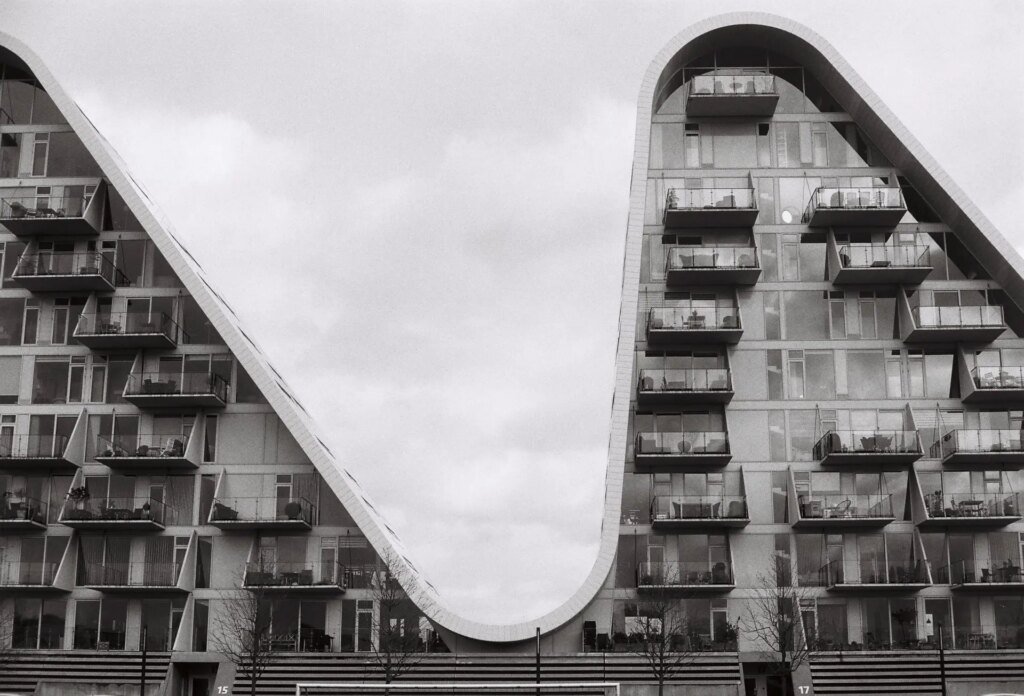
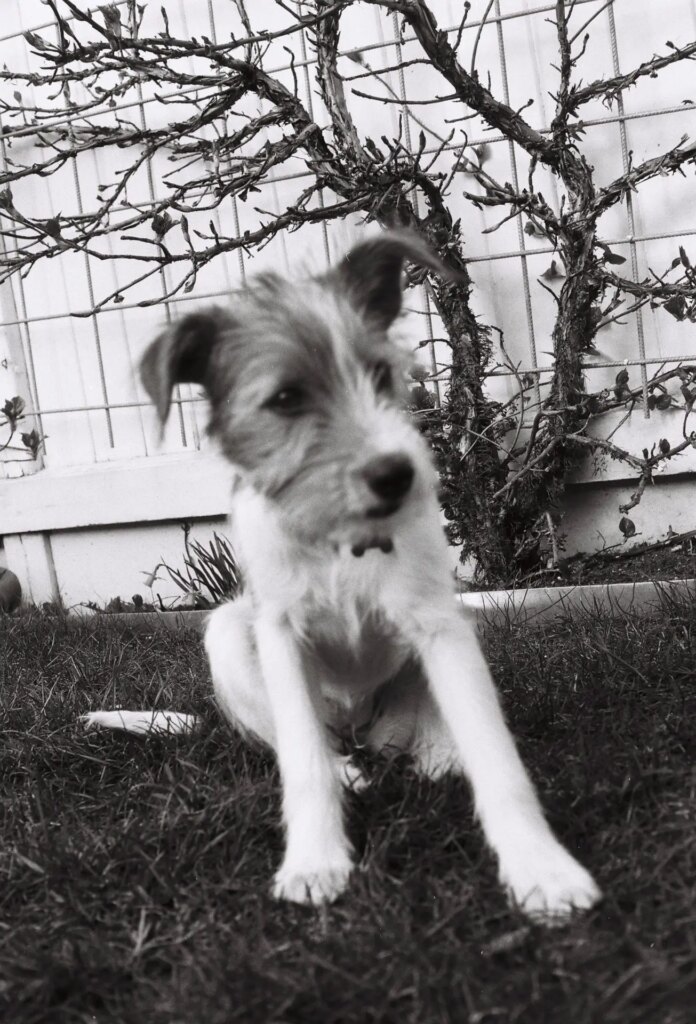
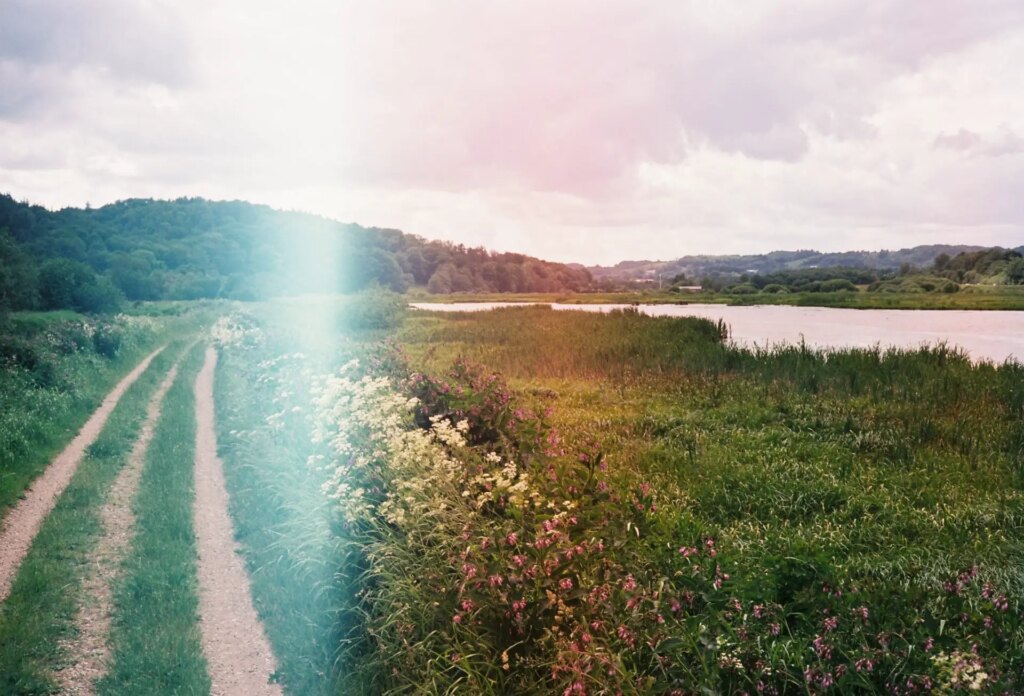
Conclusion
I haven’t yet decided what to do with this camera. I think I still need to figure out if rangefinders work for me. With the Olympus XA, while technically a rangefinder, I do not use the focusing patch much and mostly use zone-focusing and hyperfocal – and I love it for its compact size and great lens. So maybe I need to find another, “proper” rangefinder to test, one where the focusing experience is known to be better. If you have recommendations, please don’t hesitate!
Thank you for reading,
François Marlier
You can find me on Instagram and on Grainery.
Share this post:
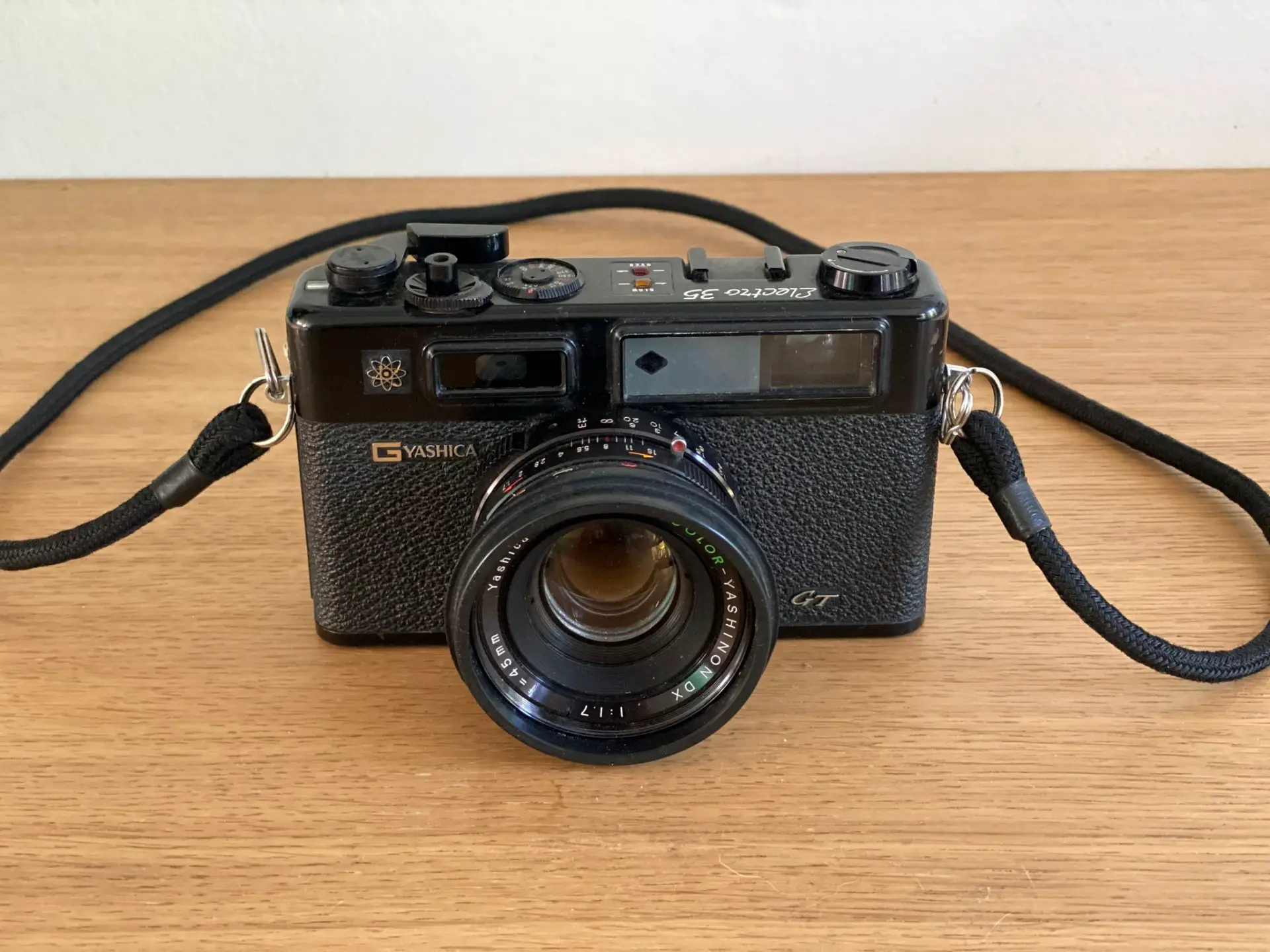
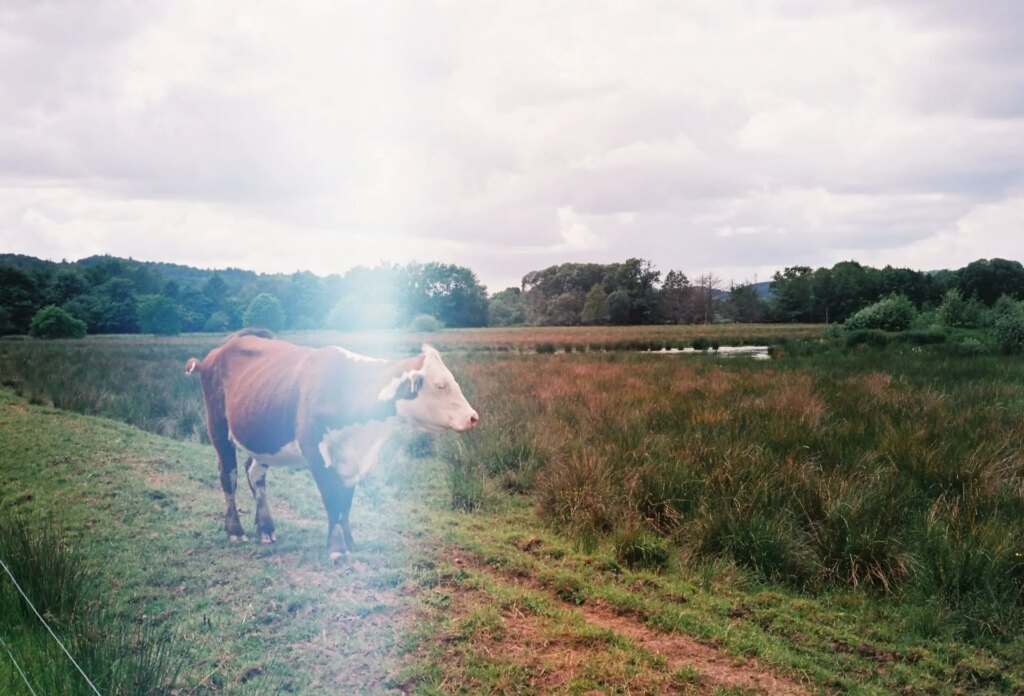








Comments
Bob Janes on Yashica Electro 35 GT – Finding a Rangefinder – By Francois Marlier
Comment posted: 08/07/2022
If you want to try something a little more conventional than the XA, the Konica C35 is a classic, with programmed exposure and linked speeds/apertures visible in the viewfinder - there were lots of similar cameras from Canon, Olympus etc which were also great, but some of them have relatively heavy shutter releases. The Canonet 28 currently being used as part of the Travelling Canonet project on 35mmc is proving to be very robust.
For tiny cameras with great lenses (but no rangefinder), the Minox 35 series is legendary (one of the loveliest lenses ever), but they do tend to be a bit fragile in my experience. The Rollei 35 series cameras are also supposed to be very good, but I haven't shot with them myself.
Comment posted: 08/07/2022
Lee on Yashica Electro 35 GT – Finding a Rangefinder – By Francois Marlier
Comment posted: 08/07/2022
Comment posted: 08/07/2022
Luigi Buono on Yashica Electro 35 GT – Finding a Rangefinder – By Francois Marlier
Comment posted: 08/07/2022
Comment posted: 08/07/2022
Comment posted: 08/07/2022
Comment posted: 08/07/2022
Dan Mountin on Yashica Electro 35 GT – Finding a Rangefinder – By Francois Marlier
Comment posted: 08/07/2022
Just my humble opinion of course
Comment posted: 08/07/2022
Anindya K Maity on Yashica Electro 35 GT – Finding a Rangefinder – By Francois Marlier
Comment posted: 08/07/2022
Comment posted: 08/07/2022
Terry B on Yashica Electro 35 GT – Finding a Rangefinder – By Francois Marlier
Comment posted: 09/07/2022
14 cameras in the space of a year! Point and shoot, rangefinder, SLR and 120 roll film. It seems to me that you are looking for a camera that you like rather than searching for a camera that fits your photographic style. The two aren't the same, and the sooner that you accept that no camera is perfect you may well save yourself money and end up with one you are happy with.
But what type of camera most interests you? From your list of purchases I must admit I have no idea as it was such a scatter gun approach. I'd suggest that you decide what type of camera you're after and limit your searches to this type. Then you should consider what you want the camera to do e.g how much manual control or automation do you want? Are interchangeable lenses a priority, or would a fixed lens model meet your photographic needs? Sometimes we can be seduced by a camera's possibilities which the manufacturers were keen to stress, only to find out we didn't need or use all that versatility. I know, I've got many teashirts to prove this over the years! ☹
Good luck in your search!
Comment posted: 09/07/2022
Comment posted: 09/07/2022
Comment posted: 09/07/2022
Eric Rose on Yashica Electro 35 GT – Finding a Rangefinder – By Francois Marlier
Comment posted: 09/07/2022
Comment posted: 09/07/2022
Christoph on Yashica Electro 35 GT – Finding a Rangefinder – By Francois Marlier
Comment posted: 09/07/2022
Comment posted: 09/07/2022